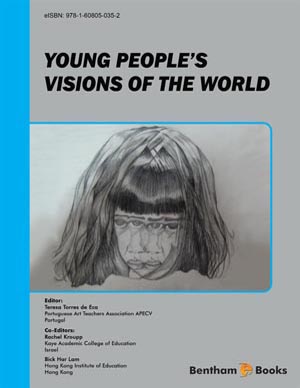Abstract
Fifty drawings of Hong Kong’s adolescent age rangeing from fifteen to eighteen were collected for study; it was a part of an international research project entitled “Drawings from the international study - Personal Cultural and Environmental Interests in Youth Art Works”, that took place during 2007-2008. The study focuses on three main research questions: “what is the intention and motivation of drawing of adolescent?”, “what are the skills adolescent used in drawing? and “how globalization and traditional cultural images are reflected in Hong Kong young adolescent’s drawing?” This chapter presents the findings on these two separate but connected parts, based on one selected drawing of the fifty adolescents. Analysis on the images and written record on the intention of making that specific drawing was performed, by constant comparison and content analysis methods. The intentions were categorized which resulted in a spectrum of aims into a continuum of “art for art’s sake” and “art for life’s sake”. While images on Chinese ethical tradition, Chinese cultural beliefs, and morality were identified, global images such as boundary-free cartoon images, art styles, and visual representation of world events emerged in Hong Kong adolescent’s drawing. The study aims to discuss how adolescents consider drawing and value drawing in a critical period of growth. The discussion suggests that, in a globalized environment in which uniformity instead of varieties between different cultures is recognized, the school curriculum should try to sustain cultural values that is a precious asset of a nation, while trying to keep track with world economy. The conclusion addresses the importance of drawing in adolescents and points out the preferred method of instruction of art to benefit adolescent growth and development. The study also supplements the existing literature that drawing is an important activity in the community to promote human qualities; it enhances intelligence for human development.













